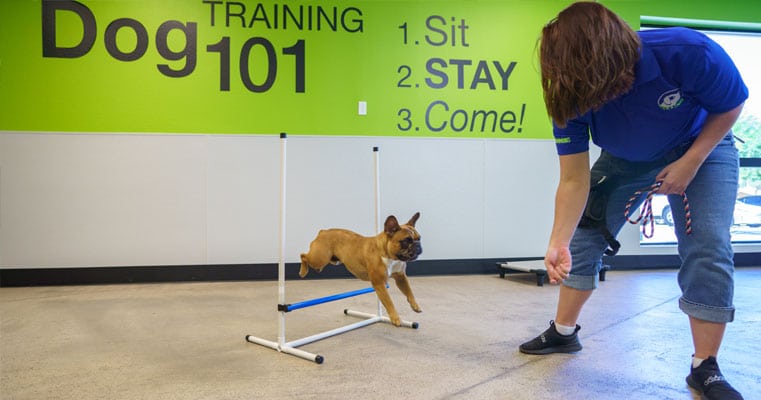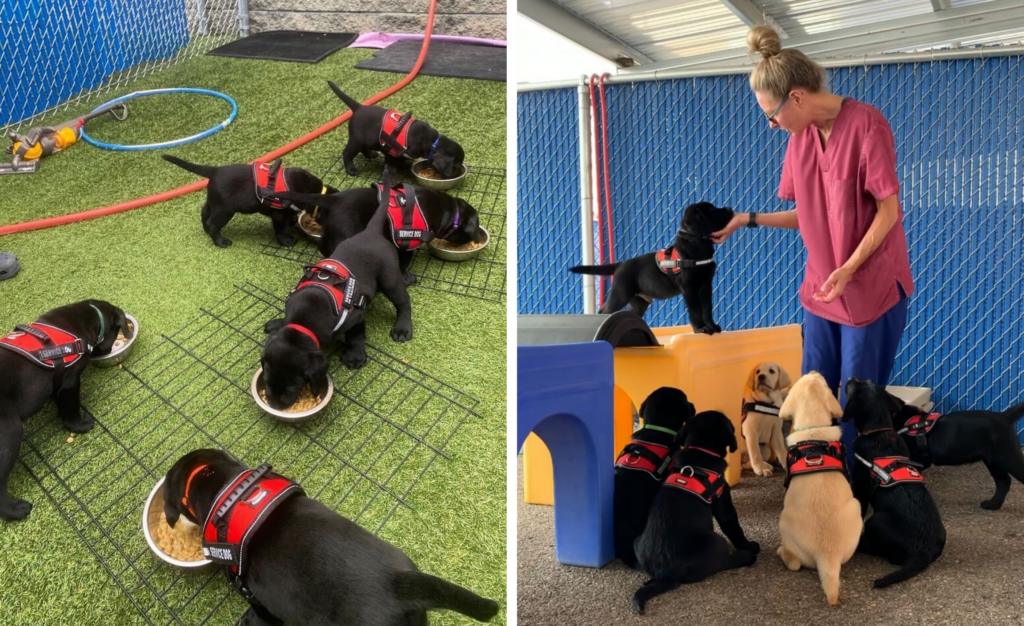Transform Your Dog's Behavior with These Proven Dog Training Methods
Transform Your Dog's Behavior with These Proven Dog Training Methods
Blog Article
Leading Canine Training Strategies Every Proprietor Must Know

Favorable Reinforcement Methods
Utilizing favorable reinforcement methods is essential for effective canine training, as it cultivates a relying on bond in between the fitness instructor and the pet. This technique concentrates on fulfilling preferable actions as opposed to penalizing unwanted ones, producing an environment for learning. Incentives can consist of deals with, praise, or play, which encourage canines to repeat the actions that make them these benefits.

Moreover, this strategy improves the dog's interest for training sessions. When canines connect training with favorable experiences, they are more involved and responsive. Beyond prompt therapy, positive support motivates a collective partnership in between the dog and trainer, lowering anxiousness and anxiety
To take full advantage of performance, it is important to deliver incentives without delay, ensuring the pet attaches the habits with the support. Fundamentally, favorable support strategies not only produce better-trained canines however additionally advertise a harmonious collaboration in between pet dog and owner.
Clicker Training Technique
The clicker training approach is a highly effective strategy that builds on the principles of positive support by adding an unique audio to mark wanted habits. This technique utilizes a little handheld tool that produces a clicking sound, permitting instructors to communicate with their pets in a clear and immediate fashion. When a canine executes a habits that the proprietor wishes to encourage, the remote control is activated, complied with by an incentive, generally in the form of treats or praise.
The key to effective clicker training lies in uniformity and timing. It is critical to click at the precise minute the wanted actions happens, guaranteeing that the dog associates the audio with the activity and the subsequent incentive. This approach not just enhances communication but additionally cultivates a more powerful bond in between the owner and the canine, as it encourages engagement and communication during training sessions.
Remote control training can be used to a range of actions and commands, from standard obedience to a lot more complex techniques. Its versatility and performance make it a preferred technique amongst professional trainers and animal proprietors alike, paving the way for a responsive and trained canine friend.
Leash Training Essentials
Effective leash training is necessary for ensuring a satisfying and secure strolling experience for both canines and their owners. Dog training. Chain training should begin very early and be approached with patience and uniformity. Beginning by choosing an ideal chain and collar or harness. A level collar may benefit some pet dogs, while others may benefit from a harness that decreases pulling.
Present your canine to the chain progressively, enabling them to discover it in a comfortable environment. Once they are accustomed, method loose-leash strolling. This includes satisfying your pet for walking close to you rather than drawing in advance. Use deals with and praise to enhance wanted actions, and make sure to read this post here stay assertive and tranquil.
If your dog begins to pull, stop walking promptly. Wait until they return to your side before returning to. This shows them that pulling does not lead to advance. In addition, method various strolling settings to assist your pet adjust to distractions.
Regular method will certainly solidify your pet dog's understanding of chain rules. Keep in mind that leash training is a continuous procedure; perseverance and consistency will certainly yield the finest results, promoting a favorable experience for both you and your canine buddy.
Socialization Strategies
Socializing is a crucial facet of pet training that should ideally start during puppyhood however can be beneficial at any kind of age. Effective socialization aids canines create confidence and minimizes the chance of behavioral concerns. To apply successful socialization methods, expose your canine to a selection of atmospheres, individuals, and various other pets.
Beginning with regulated settings, such as young puppy classes or organized playgroups, where young dogs can engage safely. Slowly introduce your pet to new experiences, consisting of different sounds, surfaces, and tasks. Guarantee these encounters are rewarding and positive to develop a complacency.
For adult dogs or those lacking direct exposure, start with low-stress circumstances. Short, favorable communications with pleasant human beings and tranquil pets can create favorable organizations. Use deals with and praise to enhance preferable habits during these experiences.

Uniformity and Persistence
Recognizing the importance of consistency and patience in dog training is important for attaining long lasting results. Inconsistent training can lead to complication, making it hard for the pet dog to comprehend actions or commands, ultimately hindering progress.
Pets, like people, discover at their very own pace. This cultivates a relying on partnership between the dog and owner, motivating a more prepared and enthusiastic learner.
To cultivate consistency and patience, establish a regular training regular, utilize the very same commands, and make certain that all member of the family use the very same training concepts - Dog training. By doing so, you develop a stable environment helpful to finding out, permitting your dog to establish and grow into a well-behaved companion
Final Thought
In final thought, efficient pet dog training strategies, such as favorable reinforcement, remote control training, and appropriate leash training, are necessary for cultivating a healthy owner-dog relationship. Furthermore, applying socialization strategies and preserving consistency and patience throughout the training process adds dramatically to a pet dog's total well-being. By integrating these approaches, pet owners can promote the development of well-adjusted, loyal pet dogs, inevitably enhancing the high quality of life for both the canine and the owner.
Amongst the most famous techniques are positive reinforcement, remote control training, and chain training, click for more info each offering special benefits that contribute to a well-behaved canine. As we explore these basic approaches, it comes to be noticeable that grasping their subtleties can significantly impact the training experience and the canine's overall habits.Utilizing favorable reinforcement techniques is important for reliable pet dog training, as it fosters a relying on bond between the canine and the instructor.In conclusion, efficient pet dog training techniques, such as positive reinforcement, clicker training, and correct leash training, are necessary for cultivating a healthy and balanced owner-dog connection. By incorporating these approaches, dog proprietors can help with the development of well-adjusted, loyal family pets, ultimately improving the quality of life for both the owner and the canine.
Report this page